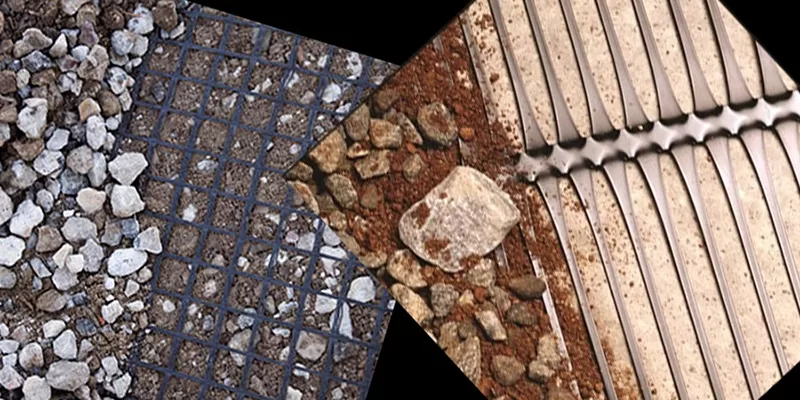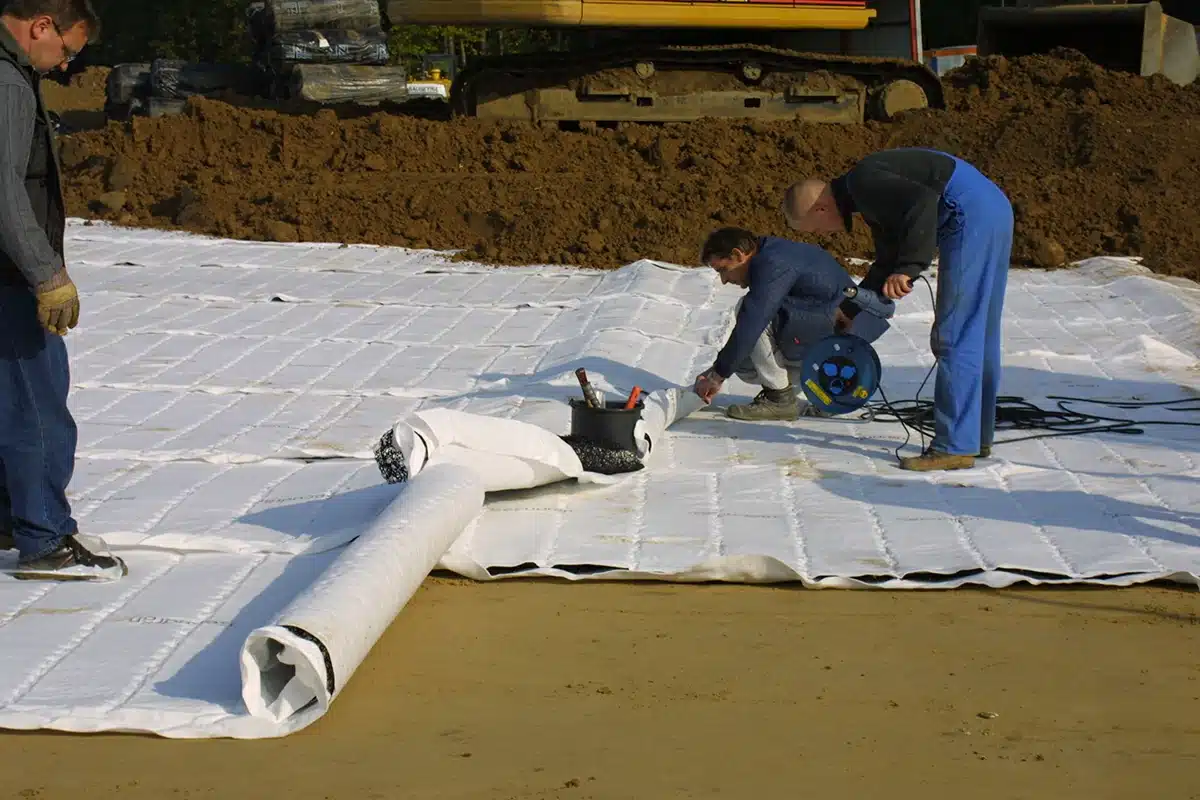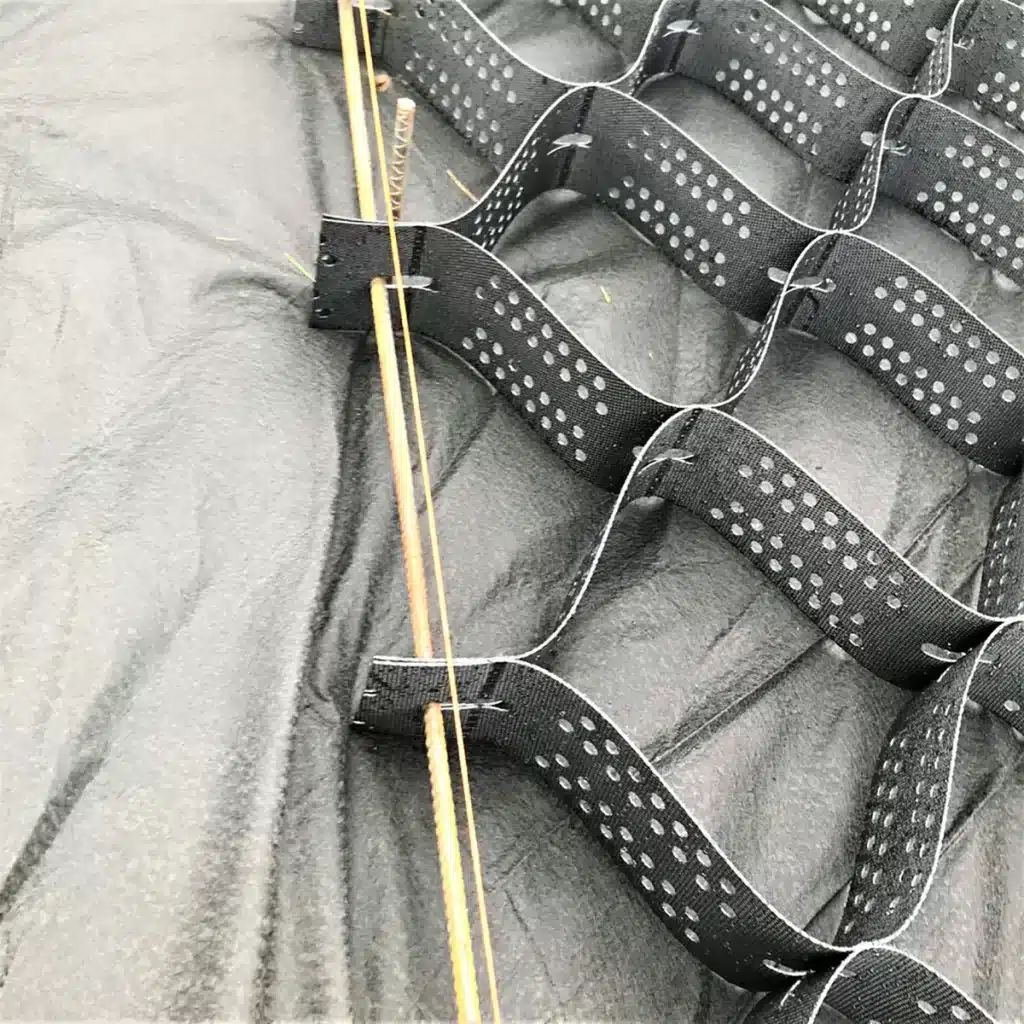+86-159 9860 6917
info@geofantex.com
geofantex@gmail.com
+86-400-8266163-44899
In the realm of civil engineering and construction, the advent of geosynthetic materials has been nothing short of revolutionary. These synthetic products, designed to address myriad challenges in geotechnical, environmental, and hydraulic applications, have become indispensable tools for sustainable development. From reinforcing earth walls to managing erosion and enhancing the durability of infrastructure, geosynthetics offer a fascinating glimpse into the future of construction and environmental preservation. This article delves into the world of geosynthetics, exploring their types, applications, benefits, and prospects, shedding light on how these innovative materials are shaping a more sustainable and resilient world.

What Are Geosynthetic Materials and What Types Exist?
- Innovation and Material Advancement: Ongoing research is focused on developing geosynthetic materials with improved performance, including the use of biodegradable polymers and recycled materials to reduce environmental impact and enhance sustainability.
- Smart Geosynthetics: The integration of sensors and IoT technologies into geosynthetics enables real-time monitoring of structural performance, soil conditions, and environmental changes, improving maintenance efficiency and infrastructure safety.
- Sustainability and Circular Economy: Greater emphasis is being placed on the reuse, recycling, and lifecycle optimization of geosynthetics, supporting a circular economy and reducing reliance on natural resources within the construction industry.
- Global Standards and Practices: The establishment of unified international standards for the design, testing, installation, and application of geosynthetics ensures consistent quality, reliability, and performance across global engineering projects.
Geosynthetic materials have become a fundamental component of modern engineering and construction, providing effective solutions to challenges related to durability, environmental protection, and sustainable development. By advancing material innovation, embracing smart technologies, and promoting global standards, geosynthetics are set to play an increasingly important role in shaping resilient infrastructure and environmentally responsible construction practices for the future.
What Are Geosynthetic Materials and What Types Exist?
Geosynthetics are synthetic materials used in civil engineering to improve soil properties and support construction projects. They provide functions such as reinforcement, filtration, drainage, separation, and containment, enhancing both performance and durability in infrastructure and environmental projects.
Common Types of Geosynthetics:
- Geotextiles: Permeable fabrics for filtration, separation, and drainage.
- Woven: High-strength, ideal for road bases and heavy loads.
- Non-woven: Flexible, used in drainage and erosion control.
- Geogrids: Reinforce and stabilize soil, commonly used in retaining walls and road foundations.
- Geomembranes: Impermeable liners for waterproofing, waste containment, and reservoirs.
- Geonets: Facilitate drainage in landfills, roads, and slopes.
- Geocomposites: Multi-functional materials combining two or more geosynthetics for enhanced performance.
Choosing the right type of geosynthetic depends on the project’s purpose—soil reinforcement, drainage, filtration, or containment—ensuring structural stability, longevity, and environmental protection.

What are the Environmental Benefits of Using Geosynthetics?
Geosynthetics offer key environmental benefits, such as:
- Erosion Control: Stabilize soil and prevent erosion.
- Waste Reduction: Minimize the use of natural materials in construction.
- Improved Drainage: Enhance water flow and reduce flooding.
- Sustainable Materials: Often made from recycled content and recyclable.
- Lower Carbon Footprint: Replace resource-heavy materials and reduce transport energy.
- Habitat Preservation: Minimize disruption to ecosystems.
In short, geosynthetics are eco-friendly, reducing waste, energy use, and environmental impact.
What is the Future of Geosynthetics Materials in Engineering and Construction?
The future of geosynthetic materials in engineering and construction looks promising, with ongoing research and development focusing on:
- Innovation and Material Advancement: Developing new materials with enhanced properties, such as biodegradable or recycled polymers, to further reduce environmental impact.
- Smart Geosynthetics: Integrating sensors and IoT technology into geosynthetics to monitor the health of infrastructure and environmental conditions in real time.
- Sustainability and Circular Economy: Emphasizing the reuse and recycling of geosynthetics to promote a circular economy within the construction industry.
- Global Standards and Practices: Establishing uniform standards and practices for the design, testing, and application of geosynthetics to ensure quality and performance worldwide.
Geosynthetic materials have emerged as a cornerstone of modern engineering and construction, offering innovative solutions to complex challenges in sustainability, durability, and environmental protection. By exploring the types, applications, benefits, and future directions of geosynthetics, it’s clear that these materials play a crucial role in paving the way for a more sustainable and resilient future. As the industry continues to evolve, the potential of geosynthetics to revolutionize construction practices and environmental conservation efforts becomes increasingly evident, marking a new era in the field of civil engineering.



Get Free Sample
We’ll respond as soon as possible(within 12 hours)






















